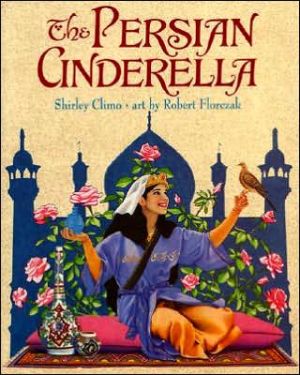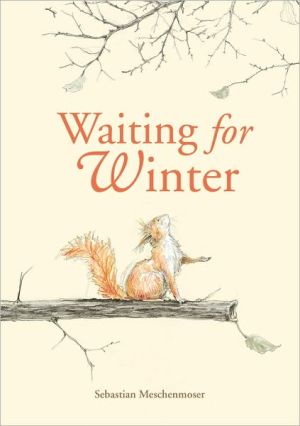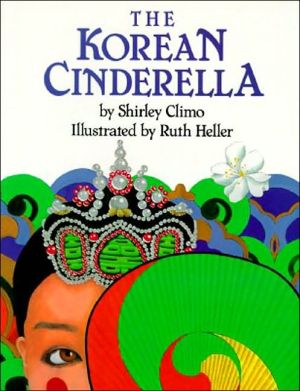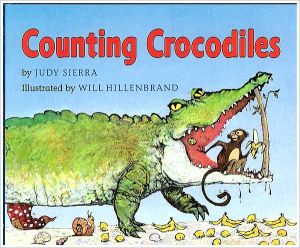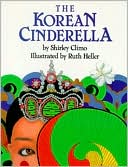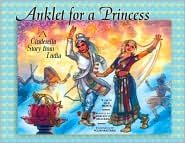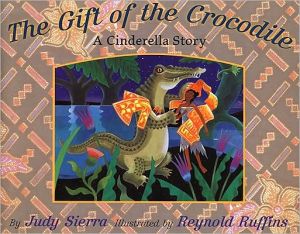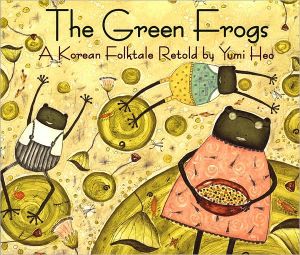Persian Cinderella
In this jewel-like version of a classic story, popular folklorist Shirley Climo tells the tale of Settareh, the Persian Cinderella. Magic enables Settareh to outsmart two jealous stepsisters and win the heart of a prince. But where most Cinderella stories end, poor Sattareh's troubles are only beginning! The unexpected plot twists will enchant readers as they rediscover the familiar tale in the lush setting of long-ago Persia. Shirley Climo's authentic details bring the story to life, and...
Search in google:
In this jewel-like version of a classic story, popular folklorist Shirley Climo tells the tale of Settareh, the Persian Cinderella. Magic enables Settareh to outsmart two jealous stepsisters and win the heart of a prince. But where most Cinderella stories end, poor Sattareh's troubles are only beginning! The unexpected plot twists will enchant readers as they rediscover the familiar tale in the lush setting of long-ago Persia. Shirley Climo's authentic details bring the story to life, and Robert Florczak's stunning paintings echo the vibrant colors and motifs of an ancient land. 01-02 TX Bluebonnet Award MasterlistPublishers WeeklyClimo's (The Egyptian Cinderella; The Irish Cinderlad) adaptation of this Arabian Nights myth offers a capricious twist on the Cinderella story. In preparation for a No Ruz (New Year) celebration at the Royal Palace, Settareh and her stepsisters go to the bazaar to choose cloth for gowns. Settarah, however, gives alms to a beggar and buys a curious blue jug instead. But inside the jug is a pari, or fairy, who grants her wish for a gown. She captures the attentions of the prince, and a lost diamond bangle fallen from her ankle provides the clue to her whereabouts. On the day of Settareh's anticipated wedding to the Prince, the jealous stepsisters seek vengeance and usurp the magical powers of the pari. They fasten Settareh's hair with enchanted hairpins to transform her into a turtledove. But Prince Mehrdad's affections remain steadfast, and it is he who breaks the spell. Historical details in both the verse and illustrations readily transport readers to 15th-century Persia. "Carpets woven in jewel like colors brightened the walls, and the scent of ginger and cinnamon from the Indies and perfumed oils from Egypt hung in the air." Pomegranate trees, jasmine flowers and other Persian botanicals adorn Florczak's (The Rainbow Bridge; Birdsong) effervescent landscapes framed with intricate borders. The characters, however, often appear to be pasted on, lending them a hyperrealistic quality. Still, the exotic setting and cultural details make this one of interest to any collector of Cinderella tales. Ages 5-9. (May) Copyright 1999 Cahners Business Information.
\ Publishers Weekly\ - Publisher's Weekly\ Climo's (The Egyptian Cinderella; The Irish Cinderlad) adaptation of this Arabian Nights myth offers a capricious twist on the Cinderella story. In preparation for a No Ruz (New Year) celebration at the Royal Palace, Settareh and her stepsisters go to the bazaar to choose cloth for gowns. Settarah, however, gives alms to a beggar and buys a curious blue jug instead. But inside the jug is a pari, or fairy, who grants her wish for a gown. She captures the attentions of the prince, and a lost diamond bangle fallen from her ankle provides the clue to her whereabouts. On the day of Settareh's anticipated wedding to the Prince, the jealous stepsisters seek vengeance and usurp the magical powers of the pari. They fasten Settareh's hair with enchanted hairpins to transform her into a turtledove. But Prince Mehrdad's affections remain steadfast, and it is he who breaks the spell. Historical details in both the verse and illustrations readily transport readers to 15th-century Persia. "Carpets woven in jewel like colors brightened the walls, and the scent of ginger and cinnamon from the Indies and perfumed oils from Egypt hung in the air." Pomegranate trees, jasmine flowers and other Persian botanicals adorn Florczak's (The Rainbow Bridge; Birdsong) effervescent landscapes framed with intricate borders. The characters, however, often appear to be pasted on, lending them a hyperrealistic quality. Still, the exotic setting and cultural details make this one of interest to any collector of Cinderella tales. Ages 5-9. (May) Copyright 1999 Cahners Business Information.\ \ \ \ \ Children's Literature\ - Uma Krishnaswami\ Here's the latest from Climo, who has brought us Cinderellas, a Cinderlad, and mermaids from around the globe. This is the story of Settareh, "who belonged to no one, and nothing belonged to her." Classic Cinderella ingredients are recognizable-jealous stepsisters, a festive event hosted by a prince, a magical pari who grants wishes. They come cloaked in "silk the color of ripe pomegranate seeds," and scented with jasmine blossoms. A twist in the tale seems to lose Settareh her prince, but in the end all is set right. An author's note offers source and adaptation information. Florczak's multimedia illustrations gracefully incorporate elements of Persian architecture and design.\ \ \ School Library JournalK-Gr 4-After giving most of her money to a beggar, young Settareh spends her last coins on a cracked jug instead of purchasing fabric for a new dress to wear to the prince's celebrations. Resigned to remaining home, she discovers that the pot is inhabited by a pari that is able to grant her every wish. She attends the festival, catches the eye of the prince, leaves behind a diamond ankle bracelet, and is found by the queen. Settareh unwisely reveals the secret of the jug to her stepsisters, who steal it and instruct it to get rid of the young woman. The jug self-destructs, leaving behind six jeweled hairpins that, once placed in Settareh's hair, turn her into a turtledove. When the grieving prince befriends the bird, he finds the pins and pulls them out, thus restoring his beloved. The story is well told, although the drama, and hence the pace, is somewhat subdued. The narrative reads smoothly and majestically and Climo explains her choices in a source note. Florczak's sumptuous illustrations have jewel-like tones that glow against the brownline-paper background, and traditional designs decorate the text. The illustrations are realistic and appealing, although in one scene, Settareh is wearing a blue veil with her face exposed when the text specifies that she and the other women draped themselves in black to conceal their faces. Despite this minor flaw, this is a suitable complement to Climo's other "Cinderella" stories.-Donna L. Scanlon, Lancaster County Library, PA Copyright 1999 Cahners Business Information.\ \ \ \ \ Kirkus ReviewsA luminescent interpretation of an ancient Persian tale is Climo's latest entry to her multicultural collection of Cinderella tales (The Irish Cinderlad, 1996, etc.). Motherless Settareh, whose name means star (a reference to the shape of the birthmark on her cheek), has a typically Cinderella-esque existence with her stepmother and stepsisters. That the ignored and often neglected young woman blossoms into a beauty is a foregone conclusion, but here her aid manifests itself as a pari—fairy—in a mysterious blue jar, and Settareh captures the interest of the young prince at the New Year celebration. The lush descriptions of an authentic time and place lend an exotic tone to the familiar tale: "Each girl and every woman, no matter her age, covered her head with a cloak so that no stranger might look on her face. Then, like a flock of black birds, the mothers, daughters, sisters, and cousins flew down the road to the marketplace." Florczak's meticulously researched illustrations faithfully depict the ornate beauty of an ancient land. Minutely detailed borders frame the text while vibrant images stream in saturated colors across the pages. (Picture book/folklore. 5-9)\ \
